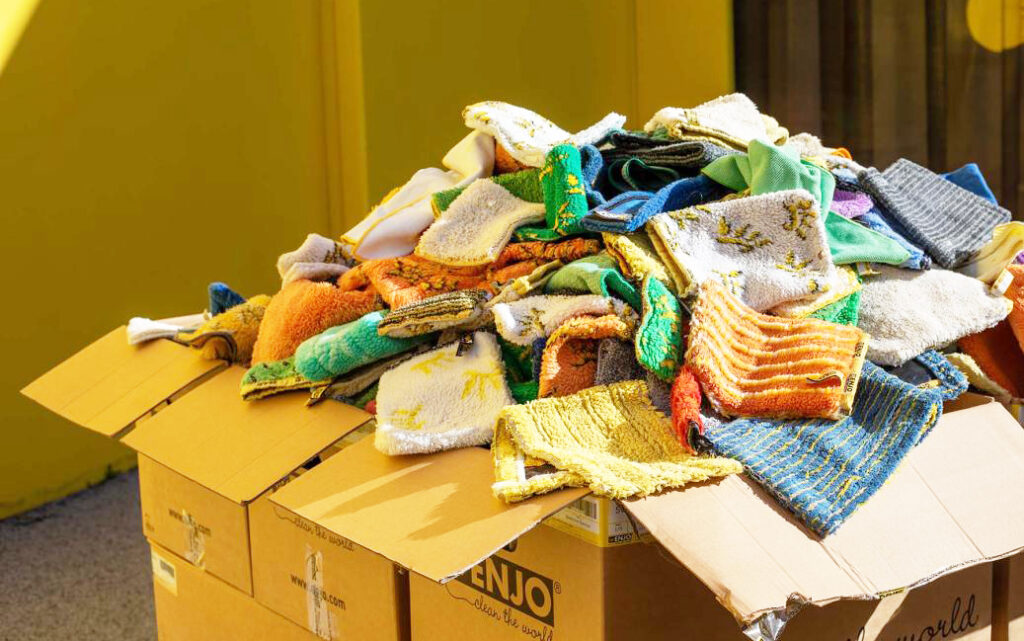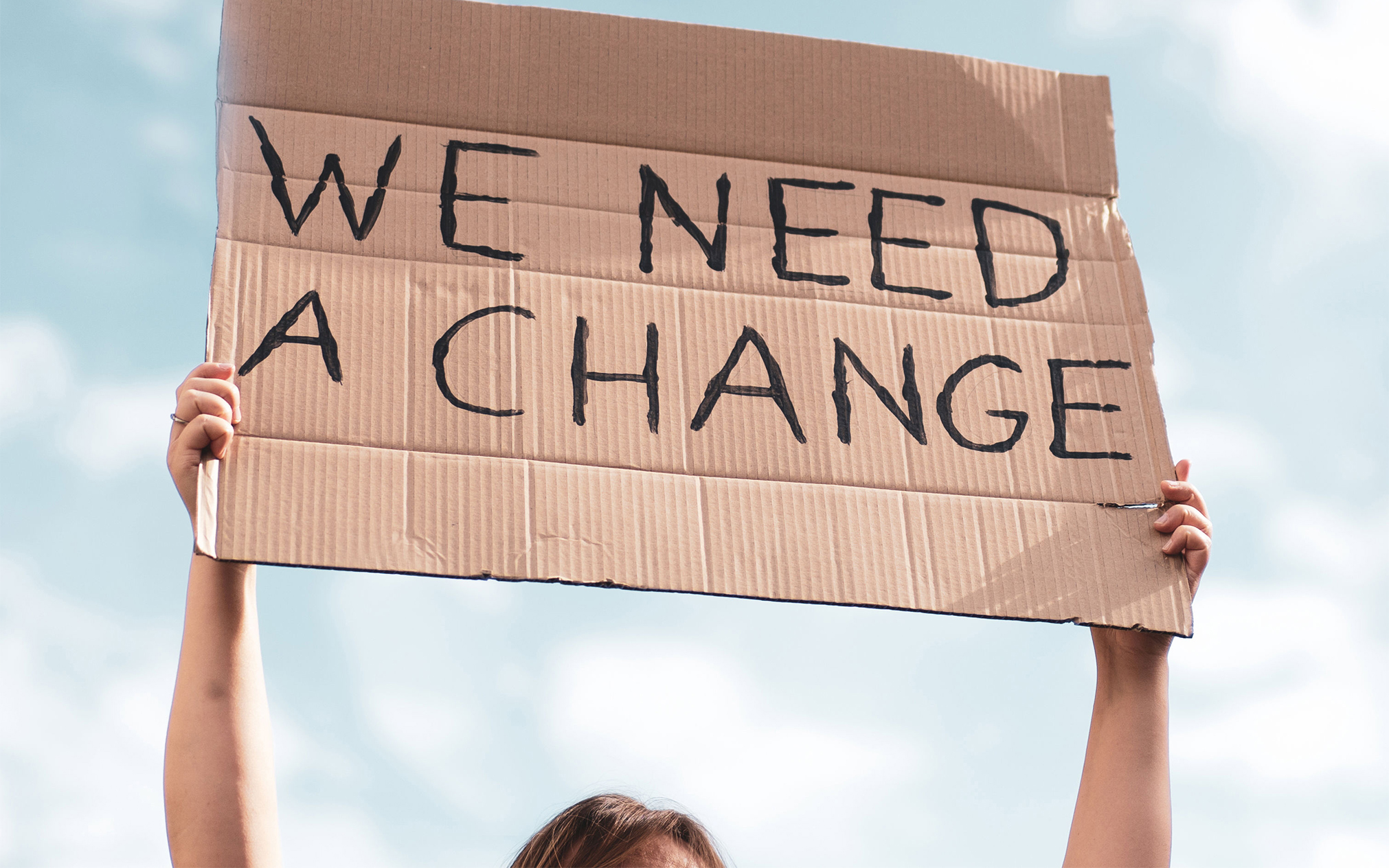Environmental and anti-slavery experts are calling on Australian consumers to re-examine their relationship with fast fashion as the impact on the environment and vulnerable garment workers continues to grow.
WHAT THE EXPERTS SAY
According to sustainability advocate and CEO of ENJO Barb de Corti, rising demand for fashion from low-priced ‘dupes’ of popular styles to dirt-cheap basics not only puts a strain on the planet but also encourages a mindset that views animals and nature as commodities to be exploited.
ENJO is a brand that is focused on creating home cleaning products that replace chemicals and disposable products with reusable Fibre technology. Friedrich Engl, an Austrian, who developed the first unique ENJOtex Fibre that effectively lifted oil and grease in 1985.
“We need a more sustainable model of consumption that prioritises human and environmental wellbeing. Buying quality items that are built to last, reconsidering the need for trendy fast fashion pieces, and repurposing existing pieces in your closet are all good starting points to ending this toxic cycle of environmental degradation and exploitation of garment workers,” says Barb [pictured below].

One of the leaders in the creation of the Global Slavery Index and Founder of Fair Futures, Fiona David [pictured below] adds that “we need to be thinking about the people who are making our clothes, and the conditions that they are working in. Manufacturing, which includes finishing textiles and apparel manufacturing, makes up a significant proportion of the estimated 28 million people globally who are trapped in forced labour”.
Fair Futures was founded by Fiona David in recognition of the urgent need to build new ways of working that enable net zero goals to be met, while respecting human rights.
“Much of our clothing is made by low-paid workers in garment factories throughout Asia, some of whom are working in inhumane conditions and unable to leave due to threats of violence, manipulation, and other forms of abuse of power. But exploitation is not confined to these factories. Raw materials like cotton, silk, and leather have also been linked to forced and child labour in other locations.”

WE BUY TOO MANY CLOTHES
Though the latest Oxfam polling found 70% of Aussies don’t trust fashion brands’ claims about how they treat garment workers in their supply chains, unprecedented demand for fashion is expected to generate US $21.72 billion in 2024.
Fiona notes that while many consumers want to know about the people behind their clothes, in an industry with lots of “greenwashing” it can be difficult for consumers to know which claims to believe. Equally, the expectations on business could be much clearer.
In Australia, companies with a turnover of $100 million or more, are required to report on their anti-slavery efforts, under the Modern Slavery Act. But the legislation does not yet make it clear exactly what steps businesses need to take.
This enables some companies to do much less than others, resulting in less ethical operators undercutting those who are trying to do the right thing. The Government has indicated reform on this issue will be an area of focus for the newly created Anti-Slavery Commissioner.
According to the Australia Institute, Australians buy more clothing per person than any other country, fuelling a waste crisis which threatens both the environment and the wellbeing of vulnerable garment workers. Alarmingly more than 10 years on from the tragic Rana Plaza factory collapse in Bangladesh which saw the deaths of 1,135 people working in inhumane conditions to produce readymade garments for the western fashion market, not much has changed.
NON-RECYCLABLE AND NON-DONATABLE
Most garments are non-recyclable and non donatable. “It’s a little-known fact that the decline of quality tailoring and the rise of fast fashion has led to massive amounts of clothing unable to be re-used or recycled,” says Barb. “Those items that you bought from Shein that you are donating to goodwill are likely to be dumped in landfill or sent to the other side of the planet to developing countries.”
The cheaper the item you’re buying, the more likely it is that the environment is paying the price. “Overconsumption and overproduction of garments creates a huge amount of plastic waste that doesn’t get recycled. It’s discarded as soon as the trend is no longer in fashion and contributes nothing but pollution and a lot of wasted money,” says Barb.
The Australian Fashion Council estimates that fibres derived from recycled clothing accounts for less than 2% of new clothing though there is demand for more clothing made with recycled content.
Overconsumption of fashion adds to the plastic pollution crisis where plastics entangle and endanger fragile marine life and break down into microplastics which are a danger to human health.
FAST FASHION AND MODERN SLAVERY
The lack of traceability in supply chains, and transparency about efforts to ensure decent working conditions are maintained, makes it hard for consumers to make ethical purchasing decisions.
“Consumers genuinely want to see their favourite brands treat garment workers well, which includes providing them with a living wage. However, without mandatory human rights due diligence requirements in place across supply chains it is the brands who do the right thing that wear the cost of due diligence and risk being undercut by less ethical brands” says Fiona.
“In the fashion industry, modern slavery risk can exist at all points of the supply chain, from the production of raw materials, to textile processing and dyeing, assembly of garments, and distribution of finished goods to their final destination. For example, cotton, a material identified by the US Department of Labour to be produced by forced and child labour across 15 countries, is in roughly half of all textiles produced globally.”
According to the Global Slavery Index 2023 report, garments accounted for US $147.9 billion of the US $468 billion worth of goods imported by G20 nations considered to be at risk of modern slavery.
Many garment workers suffer from unsafe working conditions, gender-based violence and even forced labour. This is exacerbated by the competitive and fast-paced nature of the fashion industry, and poor enforcement of labour laws.
IT IS UP TO US
“We all have a role to play in creating a more positive outcome for the environment; every little choice adds up. It starts with saying no to that $8 tee and ends with calling on retailers and brands to act more ethically,” Barb says. “I remain hopeful that with growing awareness of this issue, we can find a balance between expressing ourselves through fashion without costing the planet.”

Fiona adds: “The continued marketing of cheap clothing is a clear indicator that more needs to be done to draw attention to the damaging effects of fast fashion. If we want to protect the environment and achieve justice for garment workers, we urgently need to break up with fast fashion. In the end, we must ask ourselves if our desire to keep up with fashion trends is worth it and put pressure on legislators to hold the fashion industry accountable.”
For more information about Fair Futures, go to fairfutures.com. For more information about Enjo, go to www.enjo.com.au. You can follow Fiona on LinkedIn at linkedin.com/in/fiona-david, and Barb inkedin.com/in/barbdecorti
Learn more about Australian fashion brands in our Stories Section










